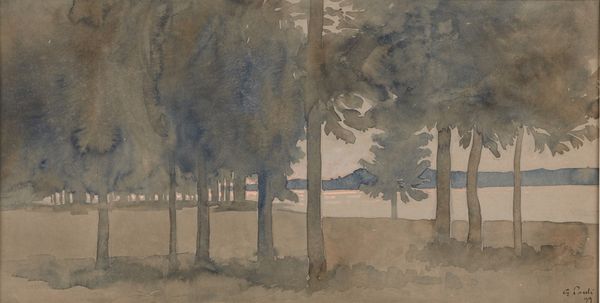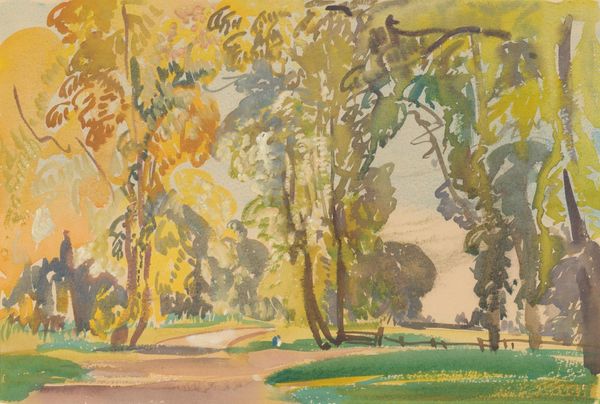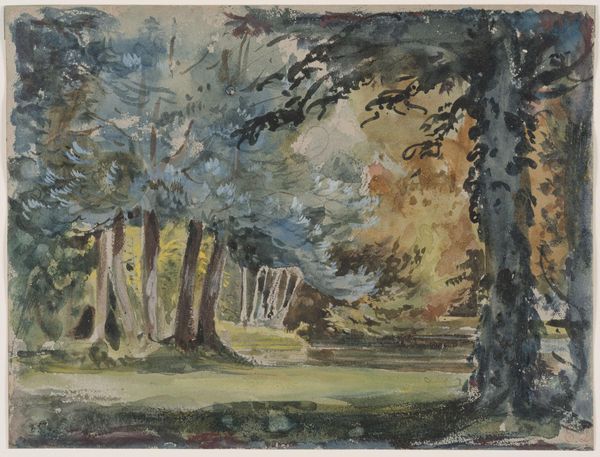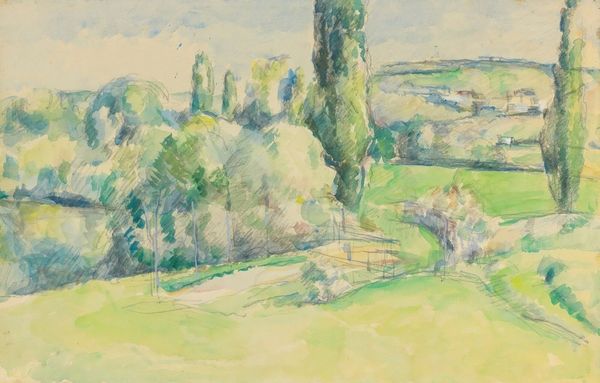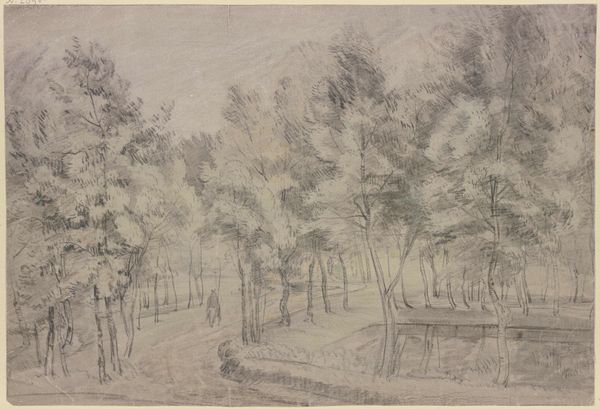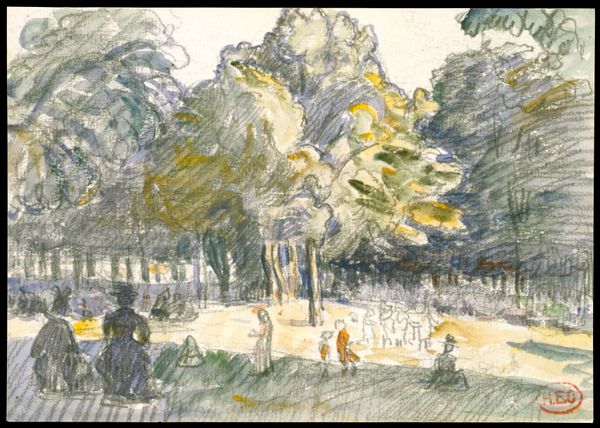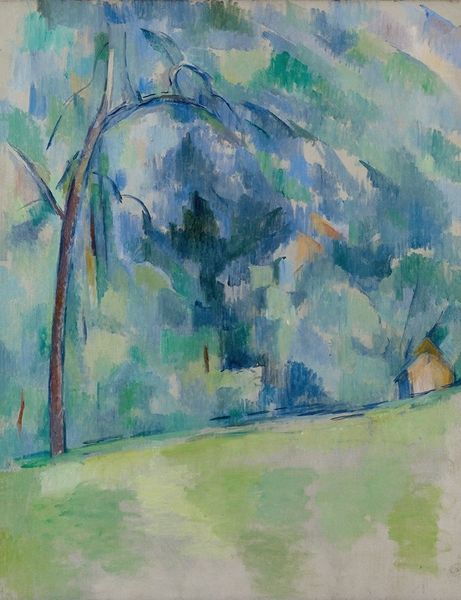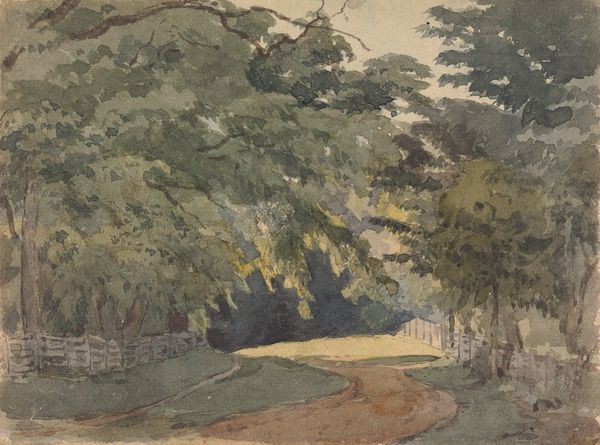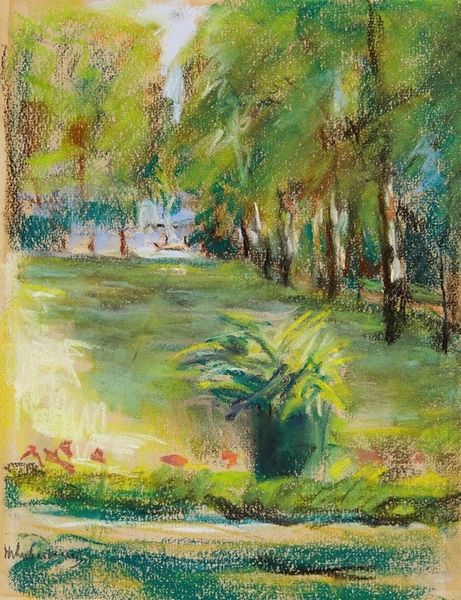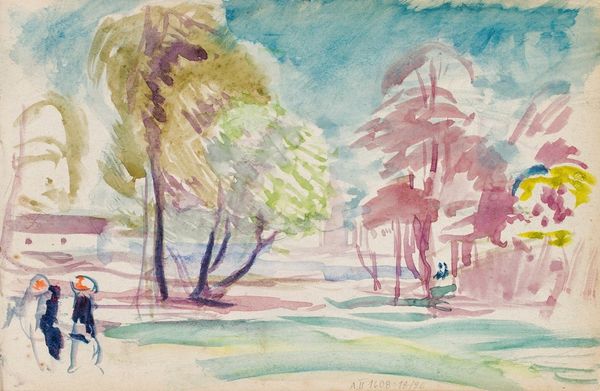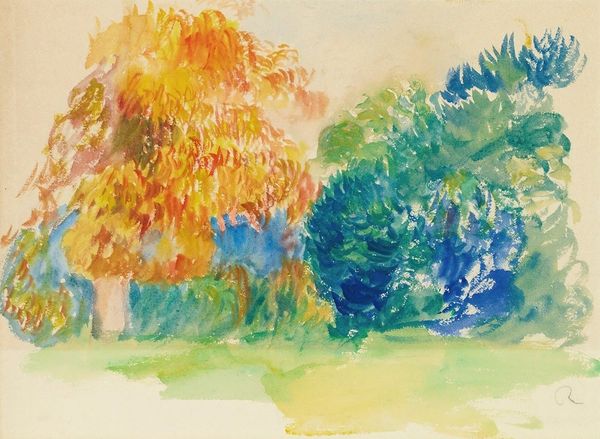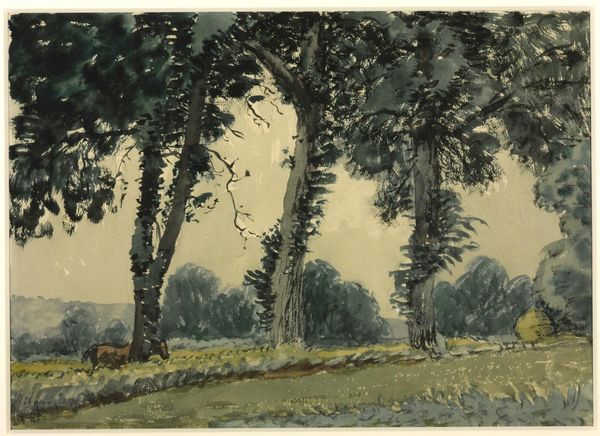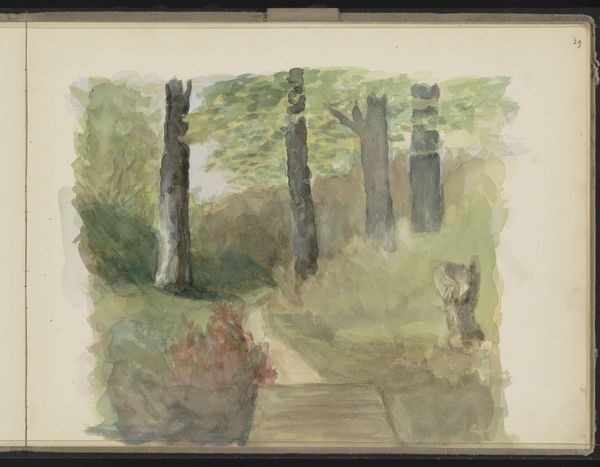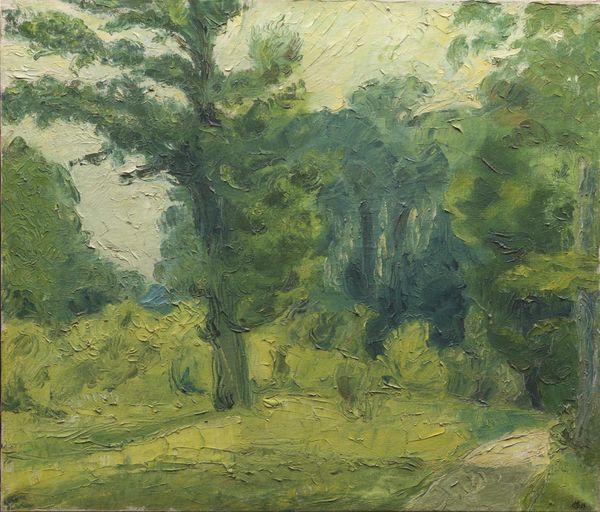
painting, watercolor
#
painting
#
impressionism
#
landscape
#
watercolor
#
post-impressionism
#
watercolor
Copyright: Public Domain: Artvee
Editor: This is Paul Cézanne's watercolor painting "Avenue of Chestnut Trees at the Jas de Bouffan," made sometime between 1878 and 1890. It’s gorgeous; so dreamlike. I'm struck by how the trees frame the composition, but the color feels almost faded, like a memory. What catches your eye in this work? Curator: Note the application of pigment. Observe how Cézanne uses discrete touches of watercolor to construct form and space. He relinquishes traditional illusionism in favor of an analytical approach. Consider, too, the bare paper he integrates: How does its presence alter our reading of the represented scene? Editor: It’s interesting you point out the bare paper, I didn't realize how much negative space there was before! Curator: Precisely. The interplay between what is painted and what is left unpainted becomes integral to the work's structure. Note also the chromatic relationships. What do you make of Cézanne's use of blue and green, and their interaction with the paper? Editor: The blues and greens definitely give it a cooler, calming mood. It's not trying to perfectly capture the scene, but an idea of the scene, focusing on the colors more than sharp details. Curator: Precisely. Through color and composition, Cézanne transforms the avenue into a study of visual experience itself, dissolving traditional perspectival space into planes of interacting color. Editor: I see it! I came in thinking of it as just a pretty landscape, but now I recognize his experimentation and abstraction in capturing a fleeting moment. Curator: Indeed. It is the reduction to form that offers complexity; we see beyond the simple path.
Comments
No comments
Be the first to comment and join the conversation on the ultimate creative platform.
